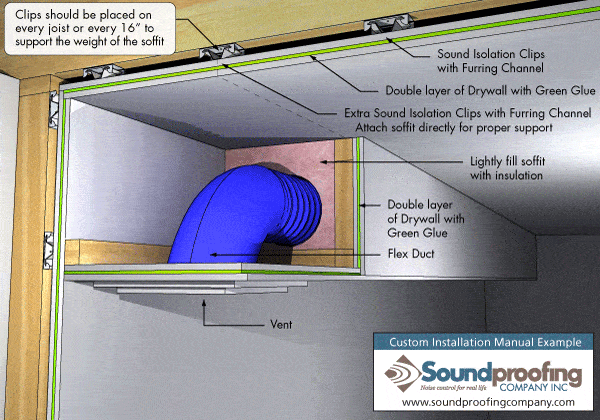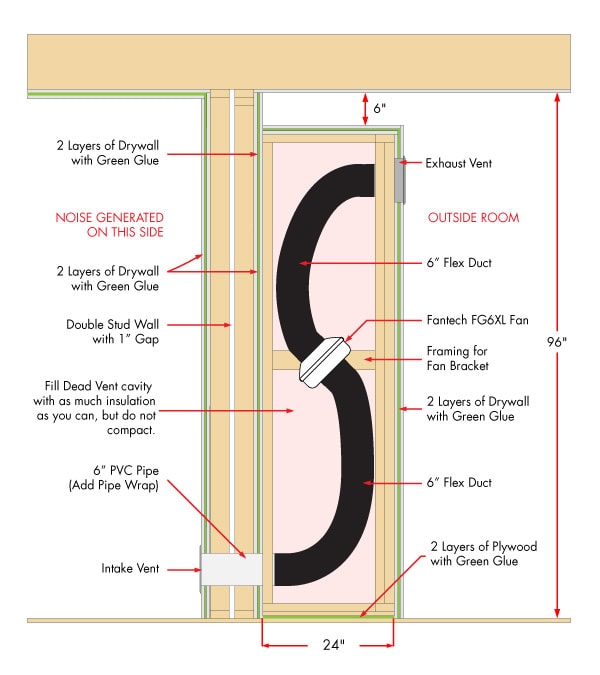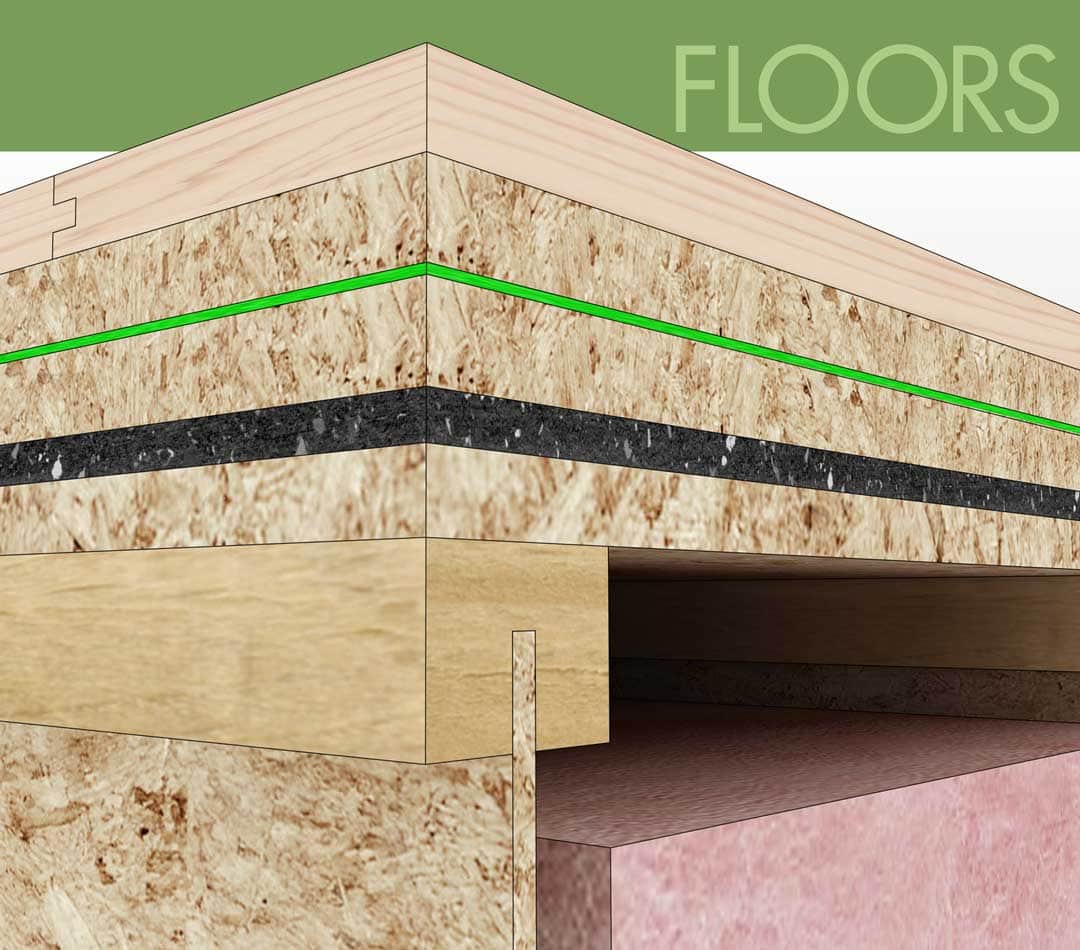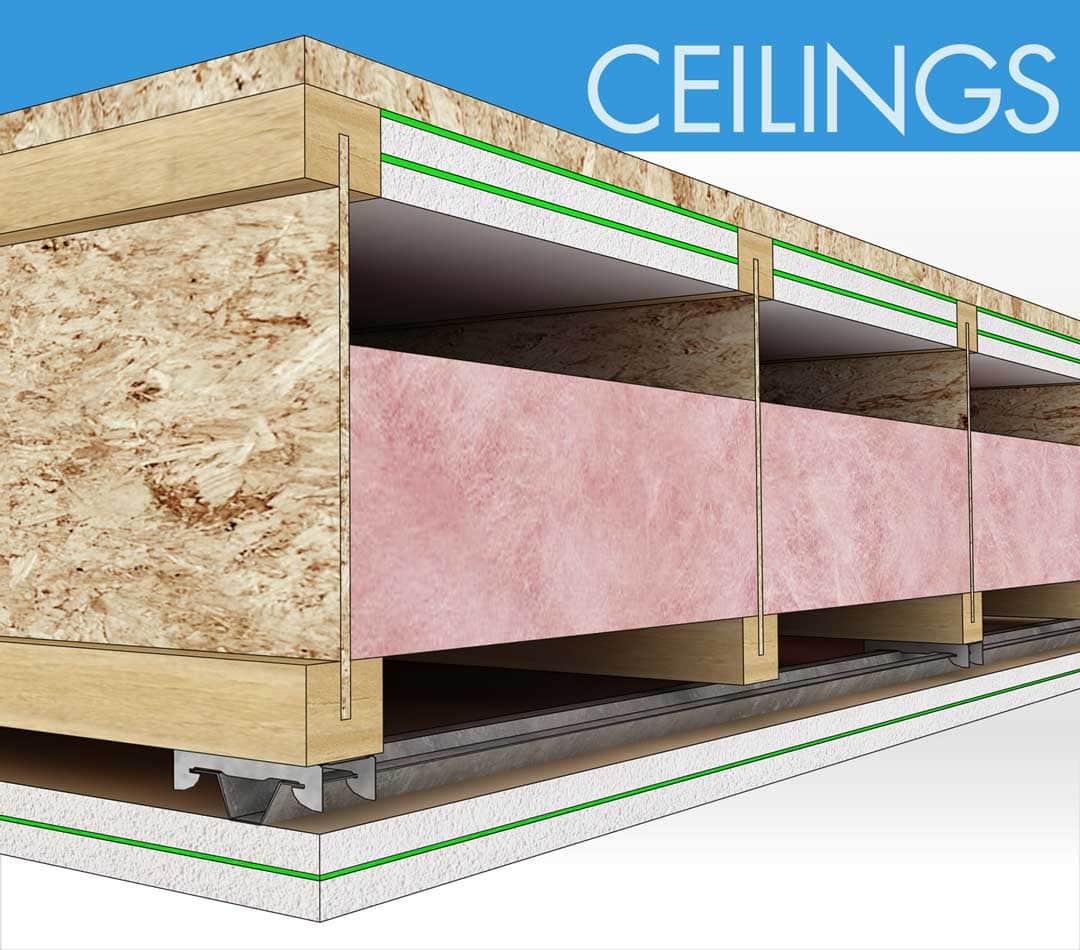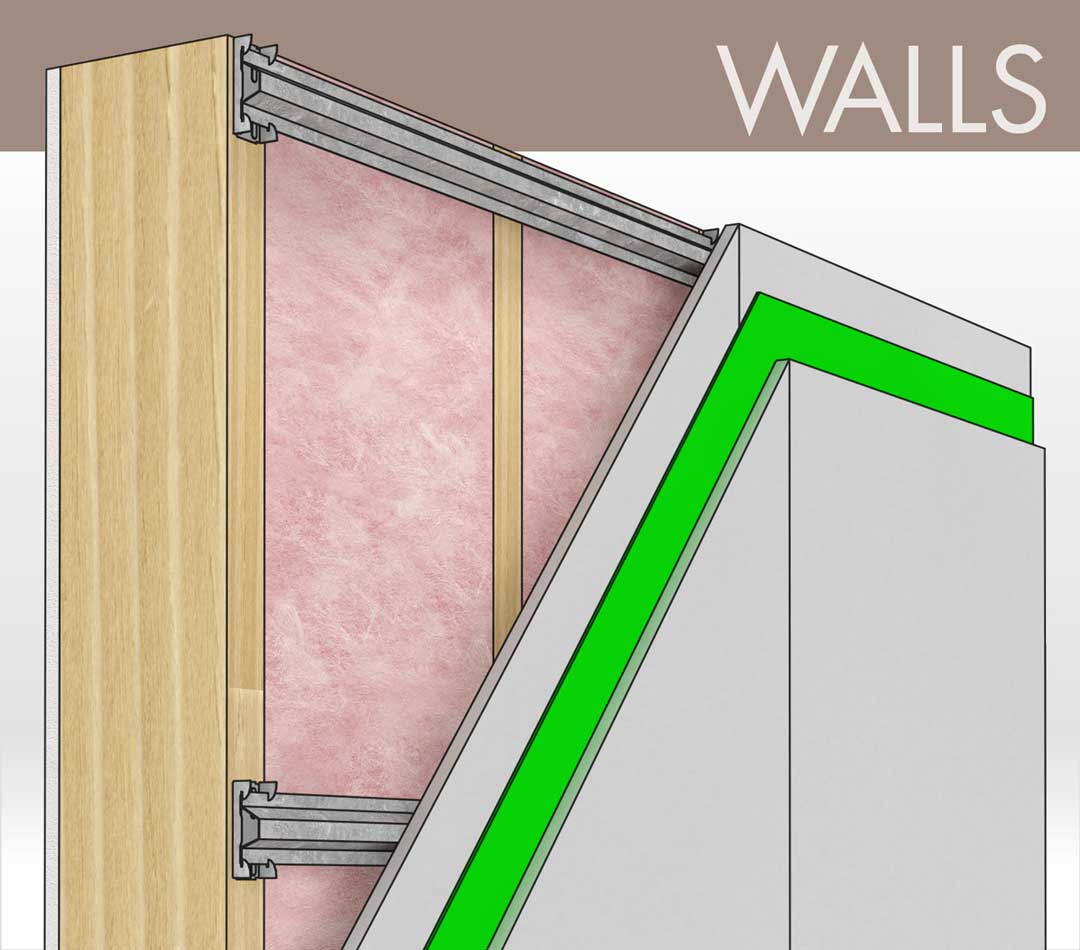How to ventilate a sealed room
It's unfortunately common to build a soundproof room with massive walls and ceiling, only to forget about the ventilation. Air needs to travel through the vents, the sound shouldn't.
The issue with flex duct for soundproofing
Contrary to what you may have read, flex duct will NOT solve all ventilation-related soundproofing issues. With flex vent, people typically cut 6" diameter holes in the newly soundproofed ceiling, exposing the original framing behind the layers of ceiling drywall. They believe that 6" diameter hole has insulated flex duct in the joist cavities to fix most noise issues, and they have incorporated a bend or two in the flex to fix the rest.
Nothing could be further from the truth.
Flex duct does not have nearly enough absorptive material to deal with sound waves. Sound will simply blast through flex duct and keep traveling to other parts of the building. There is a great deal of false soundproofing hope associated with this method. Don't get me wrong. Flex duct has a distinct role in sound isolated vent designs, however, the flex must be combined with more standard insulation to create a significant muffler
Soffit mufflers, dead vents are best for soundproofing ventilation systems
Soffit mufflers - also called ventilation mufflers - will lower the noise level in the vents before it exits into the main HVAC system. These ducts fit nicely in a room's soffit.
Yet there are times when a soffit muffler isn't practical. In these cases, a dead vent might be more appropriate:

